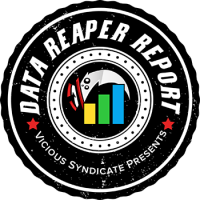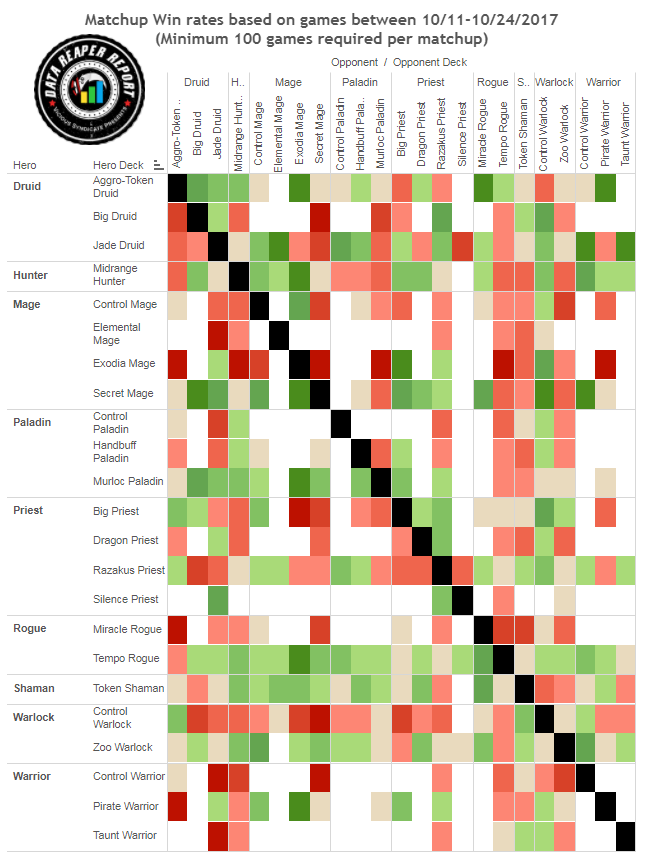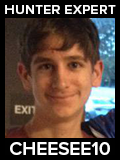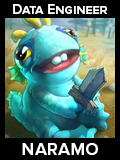
Welcome to the 67th edition of the Data Reaper Report!
Our Data Reaper Project, including the Data Reaper Live has 4,200 active contributors. Without them, this project would not be possible, so we’d like to thank all of our contributors for their help.
Quick Links
Class/Archetype Distribution | Class Frequency | Matchup Winrates | vS Power Rankings | Class Analysis & Decklists | Meta Breaker of the Week | How to Contribute | Credits
Number of Games
| Overall | 80,000 |
| Legend | 10,000 |
| Ranks 1-5 | 30,000 |
| Ranks 6-10 | 22,000 |
| Ranks 11-15 | 15,000 |
Class/Archetype Distribution
[TABS_PRO id=10805]
Class Frequency
[TABS_PRO id=10806]
Class Frequency Discussion
The meta shift we were hinting at last week is beginning to show. Tempo Rogue, Jade Druid and Razakus Priest, the three meta-defining decks of the post-nerf KFT era, have seen significant declines in their play rates at legend. Their popularity at legend dropped from 60% to 50% within the span of a week. While the Big 3 are obviously very strong decks, they are not too strong to the point where we can’t have other strategies establish strong spots in the meta.
While Jade Druid’s numbers have fallen, Aggro-Token Druid has risen in play, keeping the class in the 2nd spot in terms of popularity at legend. Big Druid has also maintained its relatively bigger presence at legend, where it preys on Jade & Raza.
Priest is also showing signs of diversifying. While Razakus Priest has declined, three other Priest archetypes are rising in play: Big, Dragon and Silence. Last week, we’ve talked about the Priest class and its versatility, carrying several strong strategies rather than just one, and the player base is beginning to catch up.
Warlock is the biggest winner of this week, at least when it comes to its relevance in the meta. It has seen a spike in its representation at all levels of play, catapulted by Zoo Warlock’s recent achievements on ladder as well as in the tournament scene.
The other 5 classes are declining at lower skill levels, but at legend, they are becoming slightly more common. There is a slight convergence between the meta’s at different skill levels, which often occurs towards the end of an expansion’s life.

[TABS_PRO id=10848]
The Difference Between Defining the Meta and Dominating the Meta
Before we discuss the results in this week’s report, we want to clarify something about the Power Rankings to reduce confusion among our readers and in the community. A common debate that was raised in last week’s report concerned the state of Razakus Priest:
“Hey vS. How is Razakus Priest Tier 3? Every single pro player and streamer agrees it’s a Tier 1 deck and one of the strongest in the meta, yet you suggest it’s below average on ladder and weaker than niche archetypes that barely see play like Big Druid! Who’s right? Who’s wrong?”
TL:DR No one is wrong.
The discrepancy comes because of terminology and the context in which the tiers are defined and there is no point comparing them. The vS Power Rankings only measures a deck’s performance in the context of the meta. It doesn’t measure a deck’s impact on the meta. Razakus Priest is a very powerful, meta-defining deck, and therefore it is recognized as a Tier 1 deck in the competitive scene. But, the more popular a deck becomes, the more beneficial it is to try and beat it. Its win rate was over 52% at legend just a few weeks ago in this very report, but it has since significantly dropped because of its own effect on the meta. Decks such as Control Paladin and Token Shaman either declined, or vanished into thin air, because of their poor matchups against the deck. Instead, decks that matched up well with Razakus, or straight up countered it, have risen in their place. The meta has simply shifted and focused its efforts on beating Razakus Priest and, as it turns out, the deck is not unstoppable and can be beaten by several strategies. You can still do very well with Razakus Priest; it’s just harder to do well with it now than it was three or four weeks ago. Many of the decks that display better win rates, have better win rates because no one is trying to beat them or counter them. How many Hungry Crabs have you seen recently, for example?
Another issue is that people assume that Tier 3 decks in the vS Power Rankings are bad decks. They are not. The meta constantly self corrects, and attempts to beat strategies when they rise in play, pushing their win rate down. During Un’Goro, there were several weeks in which no decks had a win rate that exceeded 52% at legend, making Tier 1 “empty”. In a balanced meta, there should be very few decks that fall into the Tier 1 category we show, or stay there consistently without being checked. Most of the meta should ideally hover around the 50% win rate mark (Tiers 2 and 3). The fact that Razakus Priest, Jade Druid and Tempo Rogue do not display excessively high win rates shows that they are not oppressive.
Compare this to Midrange Shaman in Karazhan or Jade Druid before the KFT balance changes; both were decks that had ridiculous win rates even when they made up a large portion of the meta and everyone tried to counter them (and failed). This is not something we want to see, and the fact we don’t see it right now, is a VERY good thing. The meta is supposed to ebb and flow, strategies should be stronger in some situations and weaker in other situations. Every deck that has a 47%+ win rate can see success at every level of play, is perfectly viable and can hit top legend ranks. Nearly every deck in this table that displays this win rate has done that over the past week. It’s important to note that these occurrences are also a function of popularity, not just win rate.
The Data Reaper’s purpose is to educate the community on the latest meta trends, what strategies are expected to rise and fall, what strategies carry undiscovered potential, and how to break the established meta and gain an advantage over the field. We bring to light things that could change the game’s current landscape and keep it fresh, even at times when the meta appears to be “solved.” We also highlight potential balance issues if they exists, helping the community establish a better dialogue with the game’s developers. We don’t just present numbers. We study them, provide commentary on them and give proper context to them. Looking at numbers alone is not enough to establish a thesis.
Alright, on to this week’s discussion.
vS Power Rankings Discussion
After successfully suppressing Razakus’ Priest dominance over the field, reducing its win rate by nearly 3% at legend over the past few weeks, the meta’s attention has turned to Jade Druid and Tempo Rogue. Rogue seemed to be untouchable, but in a shocking twist, has fallen in its win rate and been surpassed by three decks that range from having a modest representation on ladder, to barely seeing any play. Murloc Paladin has taken the top spot and is now the highest win rate deck at legend, followed by Aggro-Token Druid and Silence Priest, an archetype that makes its debut in this table for the first time since KFT launched. Incredible.
Why is this happening? Tempo Rogue has fallen into a trap. By focusing heavily on beating Druids and Priests with its builds choices, it has sacrificed percentages against other aggressive decks. Both Murloc Paladin and Aggro-Token Druid improved in the matchup against Rogue and have benefitted from the meta becoming greedier as the Big 3 attempt to one up each other in their direct matchups. Priests are cutting defensive cards such as Pint/Horror. Druids have long dropped their Doomsayers (which is correct, in the current meta). Many Rogues are running Vicious Fledglings instead of Tar Creepers, Cairne Bloodhoof, multiple 5 drops and the burst Leeroy package. Meanwhile, Murloc Paladin has undergone new cycles of refinements, focusing its effort on beating the Big 3, while they have not cared for this matchup at all. Murloc Paladin also heavily counters new strategies that target Jade and Razakus, such as Big Druid and Big Priest, while Aggro-Token Druid benefits from a mulligan advantage on ladder, with most players assuming they are about to face yet another Jade Druid, and getting caught off guard. The result is that these decks currently display the highest win rates in the game, and as such, should see a rise in play until the meta is forced to pay attention to them.
Silence Priest is a different story. It has looked very promising in our metrics for a while, and we’ve identified it as a sleeper deck even when its sample size was too low to put on this table. Last week, its win rate was in the 51% range, and this week it has jumped to surpass the 52% mark, with multiple players achieving high legend success with the archetype despite the deck being barely played on ladder. This is the result of the deck’s fantastic matchups against Jade Druid and Razakus Priest, two of the most prevalent decks in the game, carrying this archetype to ladder fame. One issue the archetype has is the matchup with Murloc Paladin. It’s really bad. Currently, there are barely any of those on ladder, but if this changes, Silence Priest’s favorability against the meta could be reduced.
Other decks are also benefitting from a narrow meta fixated on Jade Druid and Raza Priest, and since both Jade and Raza are susceptible to similar things (tall boards, which is what we like to call, “vertical pressure”), there are quite a few decks that do well enough against both to offset their weaknesses in other matchups. Big Druid, Big Priest, and Secret Mage are good examples. Dragon Priest is another deck that benefits in a similar fashion but looks statistically weaker at the moment. Note that this archetype has yet to fully adopt the latest iterations that have recently made it very successful at higher levels of play, so we want to wait until these builds fully spread before we make judgments.
Zoo Warlock is one of biggest winners of the week, and it seems to have finally shaken off its performance at higher levels of play, which correlates with the increase in its popularity at legend ranks. We’ve seen an improvement in its matchups against both Priest and Rogue. In addition, its success in the tournament scene recently has provided further evidence that the classic archetype is here to stay.
Hunter and Shaman continue to display relative mediocrity. There are some signs that Shaman may finally go through a development stage in which it could change its builds in the hopes of standing in a better spot against the field, but in the case of Hunter, there is very little innovation going around.
Class Analysis & Decklists
Druid | Hunter | Mage | Paladin | Priest | Rogue | Shaman | Warlock | Warrior
Tempo Rogue continues to flourish the meta, and it does so with incredible diversity in its builds. The archetype is so flexible that it’s capable of fitting many different cards in order to see success in different situations. The standard Hydra/Scalebane lists we feature are only the tip of the iceberg, and make for good starting points. You should consider them as benchmark lists that can be significantly altered.
Barnes continues to be a popular 4-drop for Scalebane lists. Ike won Dreamhack Denver by running Barnes and the Lich King instead of Shaku and a Cold Blood, gearing the deck towards the Priest matchup while taking a Rogue ban into account. Valanar is often seen in lists that run Bittertide Hydra, and Xaril is also a card that sees play in either variant. Some players opt to reduce the deck’s burst package (Leeroy, Cold Blood, Shadowstep) for threat density, running both Scalebanes and Hydras. Janetzky took it one step further by running Chillwind Yeti at the 4 slot, in addition to all the 5-drops, heavily targeting Priests and Druids. Tar Creeper is very strong in the mirror and against aggressive decks, but is weak against Druid and Priest, which is why it is often flexed out for Vicious Fledglings. Some players, such as SoLegit, are running bigger burgle packages with Hallucination and Obsidian Shards. Gyong hit #1 legend with a non-Keleseth list that runs Eviscerates. Finally, you have the Corpsetaker variants that take the deck into an entirely different direction.
What we’re trying to emphasize is that Tempo Rogue has a very small core of must include cards and seems to do no wrong when it comes to its experimentation, seeing success with many different variants. In addition, the incredible flexibility makes it the most valuable deck in the tournament scene, and it’s hard to imagine a line-up that doesn’t include it. In Last Hero Standing, it is a sweeping threat against any line up, making it the most popular ban by a significant margin. In Conquest, you can gear it to beat pretty much anything.
Other Rogue archetypes aren’t so lucky, and they have fallen massively behind. Miracle Rogue is displaying an incredibly poor win rate, which often occurs to an archetype that is abandoned. It’s not as bad as it looks, but it’s still pretty weak against the field.
- Rogue Class Radar
- Scalebane Tempo Rogue
- Hydra Tempo Rogue
- StanCifka’s Corpsetaker Tempo Rogue
- Casie’s Miracle Rogue
The meta is crowded with the top three classes: Rogue, Priest and Druid. Jade Druid continues to be a meta staple thanks to its good matchup against Razakus Priest, while its matchup against Tempo Rogue is only slightly unfavorable. However, Aggro-Token Druid and Big Druid are also looking quite strong in the current meta, even if they’re not as common as Jade Druid.
Jade Druid’s build has mostly reached a consensus. Twenty eight cards are considered core and most top players would not recommend cutting any of them. Medivh is the 29th card and is highly recommended in a meta that’s full of mirror matchups as well as Priests. The card is also underrated in the way it can swing boards and win games against midrange decks. The one flex card in our featured list is Spellbreaker. Spellbreaker can be strong against Rogues because of the threat of an early Van Cleef, and is also a good choice should Murloc Paladin become more prevalent, but the card can be replaced by pretty much any tech choice. Mind Control Tech is another popular 30th card. It is very strong in the mirror, and some players even run two copies for that reason. Power of the Wild increases the consistency of your Spreading Plague combo and the amount of pressure you can exert in the mirror and against Priests.
Aggro-Token Druid has taken advantage of a greedy meta and most of the attention being placed on Jade Druid, to launch its win rate to the top of the charts. Machamp hit #2 legend with a build that runs the nerfed Innervate/Fledgling combo, as well as Cobalt Scalebanes instead of Bittertide Hydras. Mitsuhide has been having success with a new flavor of the Pilfered Power variant. Most notably, he runs two Scalebanes and two Hydras, the 5 drop package to beat Jades and Priests, while cutting one Living Mana, which is far weaker in these matchups due to AOE and Spreading Plague. Snowflipper Penguin is also included instead of Enchanted Raven. The Penguins are strong with your buff package but they also synergize with Pilfered Power, since you can throw a Penguin into the board before you ramp to gain an extra mana. This list plays very differently than traditional lists of the archetype, since you’re not as incentivized to flood the board as quickly as possible in slower matchups. Instead, you’re looking to have enough bodies to ramp through Pilfered Power, drop your UI and your big threats and blow out your opponents through a mana and card advantage.
Meanwhile, more and more players are beginning to realize that Big Druid is no laughing matter, and this archetype is legitimately strong against the current meta. It has performed extremely well at Dreamhack Denver, and players are continuing to see success with it at top legend ranks. Save for the dream curve of Raza on 5 and Anduin on 8, the matchup with Razakus Priest usually ends in a blow-out, while Jade Druid often struggles to keep up with the vast amount of threats as well. Pinilukte’s is the most popular and successful build for the archetype and it has received quite a bit of attention and refinement. Ombre cuts the Innervates for Bright-Eyed Scouts, which can enable an incredible swing turn, while Twink cut one Innervate for Ysera, an additional threat to make life even more miserable for Priests. Both players have reached top legend ranks with the archetype, and there are numerous players who have done so with similar lists as well. Considering how little play Big Druid sees, its ladder achievements are very impressive. Don’t sleep on this deck.
- Druid Class Radar
- Standard Medivh Jade Druid
- Machamps’s Aggro-Token Druid
- Penguin Aggro-Token Druid
- Mitsuhide’s Pilfered Aggro-Token Druid
- Pinilikute’s Big Druid
- Ombre’s Big Druid
Razakus Priest, while still being a strong, meta-defining deck, has lost some of its footing entering the last week of the season. Just about everyone has officially remembered just how good Malfurion is as well as his Ultimate Infestations. Jade Druid, as well as other emerging counters, are heavily suppressing Razakus’ Priest performance against the field.
Razakus Priest has one great thing going for it, which is a decent matchup against Tempo Rogue. In a Rogue-dominated meta and a pocket field that doesn’t have as many Druids, the deck can still find great success, and multiple players have been taking the archetype to top legend ranks.
Standard builds have remained similar across the board, though some players are beginning to cut the more situational anti-aggro cards for a better chance against Jade Druid and the mirror. Hunterace took a Lyra build to #1 legend, running Dirty Rat, Kabal Talonpriest and Holy Fire instead of the Pint/Horror combo and Binding Heal. Other players have begun to cut the Pint/Horror combo as well and experimenting with other cards. One of the most interesting new choices in the deck is Giant Wasp, initially used by Satellite. It acts as a pre-emptive removal tool to answer the big threats that many decks are running to beat Priest, such as Hydra or Scalebane. Another card that flexes in and out of the deck is Tar Creeper, due to its strength against Rogue.
Other Priest archetypes continue to look very promising. Big Priest fares closer to a coin flip against Jade Druid while also serving as a counter to its Razakus counterpart, putting it in a strong position in the meta. Dragon Priest has made a breakthrough behind Mitsuhide hitting #2 legend with a new build for the archetype. Hunterace hit #1 (again) with the same build, while SirVilgaudas, the pioneer of the deck, hit #28 by swapping one Scalebane for Deathwing. This incarnation of Dragon Priest is quite unique, being a midrange deck with a full combo finisher. Much like Silence Priest, which has been performing very well too, it runs the Divine Spirit/Inner Fire/Shadow Visions package and looks to OTK low pressure decks such as Razakus Priest through one seemingly harmless minion on the board. Against Jade Druid, Dragon and Silence Priest can utilize the combo much earlier to make a big minion and start hitting face, since Jade Druid has no way to deal with a big threat effectively. This strategy is proving to be very effective, and has begun to populate higher levels of play.
Multiple players hit top legend ranks with Silence Priest, a deck that looks to be very strong against the established meta. Florindo hit #2 legend with a build that runs Golakka Crawler and Bittertide Hydra, Nuj hit #18 with the same build, while Duck hit #14 with a list that runs the Pyromancer/Circle package.
- Priest Class Radar
- Lyra Razakus Priest
- Auctioneer Razakus Priest
- Standard Big Priest
- Mitsuhide’s Dragon Priest
- SirVilgaudas’s Dragon Priest
- Florindo’s Silence Priest
- Duck’s Silence Priest
Warlock’s representation is holding stable just below the big 3 at all levels of play and Zoo Warlock is the deck most represented for the class. The archetype is continuing to deviate from standard lists. Wabeka hit top 10 legend this week with a lower curve list focused heavily on the early game and controlling the board with cards such as Glacial Shard, Dark Iron Dwarf and Deathspeaker allowing advantageous trades into the mid-game. The choice to not include Gul’dan is an interesting one and could well be correct. While the 10-mana card is certainly a powerful win condition that can often swing the game into an irrecoverable state for the opponent, most Zoo games are decided before turn 10. In addition, since we’re running Doomguards, Gul’dan is often discarded when it’s drawn early since it’s buried in your hand. Finally, in the matchups against Jade Druid and Razakus Priest, it’s arguable that if they do manage to survive to turn 10, you’re losing the game anyway, playing Gul’dan would sometimes not even matter, and it’s better to have a playable card before that point.
Control Warlock continues to show innovation but not high level results. If you’re looking for an interesting deck, Evangelion hit legend with a Control Warlock build centered on resource denial through discard and mill effects. It’s not recommended for serious ladder grinding but is recommended for having fun.
- Warlock Class Radar
- Standard Zoo Warlock
- Wabeka’s Zoo Warlock
- Zanananan’s Demon & Pirate Zoo Warlock
- Kuronti’s Control Warlock
- Evangelion’s Mill Control Warlock
Mage remains in its middle-of-the-road spot in the meta, sitting just behind Warlock in popularity. The name of the game for the class has been to do everything it can to beat Priests and Jade Druid.
Secret Mage has seen a few recent developments, with builds deviating from standard lists in order to improve the most popular matchups. Bunnyhoppor has been experimenting in the top 100 by cutting Apprentices, a weak early game minion, in order to run both Hydras and Scalebanes in addition to the Bonemares which were already present in these lists. With so many powerful mid-game minions, the pressure applied can be crippling to Jade Druid and Razakus Priest. Gaboumme took a slower approach to hit top 30 legend by running Burgly Bullies, Antonidas, Cairne and Medivh to provide the list with an incredibly powerful late game that’s difficult to deal with. Araiance took the archetype in a different direction on his way to #12 legend, by targeting the Rogue matchup instead with Golakka Crawlers and Tar Creepers.
Control Mage has been less successful, but is trying to come up with different way to match up better against Priest and Jade Druid. Gaara has been hovering around the top legend ranks with a Control Mage build that runs a lot of single target removal and Skulking Geist in order to try and exhaust the Jade Druid’s resources. It also runs Medivh, Alex and multiple direct-damage spells to try and kill Priests before they reach their win condition.
Control Mages have also begun to incorporate the Mage quest in their attempt to counter Priests. Sjoesie hit top 100 legend with a build that runs the finishing package of Alex and Arcane Giants. Akeze also hit top 100 legend cutting the Skulking Geist for a Giant Wasp, which can help getting past a taunt that stands in the way of your Arcane Giants. This build can throw the quest against aggressive decks in the mulligan phase while only keeping it against control, since it can rely on Frost Lich Jaina as its primary game ending win condition against these decks (and Arcane Giants are strong cards by themselves).
- Mage Class Radar
- BunnyHopper’s Secret Mage
- Gaboumme’s Secret Mage
- Araiance’s Secret Mage
- Gaara’s Control Mage
- Sjoesie’s Giants Control Mage
- Standard Exodia Mage
Shaman is languishing as a one-trick pony deck as it continues to be only represented by one archetype: Token Shaman. Shaman’s growth is stifled mainly because of its poor matchup against one of most popular decks: Razakus Priest.
For the first time in a while, attempts to revive the archetype can be seen. Xixo has built a very interesting list that removes the situational cards in the Token Shaman deck while adding stronger stand-alone minions. Devolve, Bloodlust and the low pressure totems (Mana Tide, Primalfin and consequently TFB) are cut. Instead, the list includes Scalebanes, Cairne, Jade Sprits and Bonemares as well as Prince Taldaram, previously seen in Baize’s Summer Championship Shaman deck.
Another card that makes its appearance is Hemet. Hemet offsets the deck’s lack of card draw by removing low impact cards from your deck, improving your draw in the late game and making it easier for the Shaman to close out the game, which is one of its biggest struggles.
TrickyHunter hit #50 legend with a Corpsetaker Midrange Shaman build. Corpsetaker has great Synergy with Al’Akir, and one Argent Squire is added for more consistency landing the Divine Shield. Lightning Bolts are meant to remove the Rogue’s early game minions (Agents, Captains, Fledglings). As always, with almost every midrange deck out there, Scalebanes and Bonemares are included.
- Shaman Class Radar
- Standard Token Shaman
- Xixo’s Good Cards Mid-Shaman
- TrickyHunter’s Corpsetaker Mid-Shaman
Murloc Paladin is certainly showing great results behind iterations running The Curator and Cobalt Scalebanes, and it’s in a fantastic spot in the meta considering it’s so often underestimated.
These cards give the deck strong on-curve plays throughout the game and provide the deck with longevity – something that Tempo Rogue can sometimes lack against Priest and Druid, once they stabilize. Jambre hit #1 Legend with a list utilizing Dread Corsair and Patches in order to maximize tempo through weapons. It is also possible to hold the 0 cost Dread Corsair until the next turn in order to attach it to a buff. The weapon package helps the deck fight for the board in the early game against aggressive decks, which is generally a struggle for the archetype, especially in matchups such as Tempo Rogue. GinjaNinja hit #27 legend by adding Golakka Crawlers, a different means to fight for the board against Rogue in the early game without potentially clogging your hand with too many weapons. Cocof hit #44 with a list that’s fairly light in tech.
One trend we’re noticing is the inclusion of Grimscale Chums over Argent Protectors, the latter being a low pressure minion against Priest and Druids, while Chums can enable some more explosive starts. Another card that’s more often seen is Coldlight Seer, which is very strong against Druids in particular since the health buff usually means they can no longer deal with your board directly using their removal.
Not much has changed for the other archetypes. Handbuff Paladin was a fun experiment, but Tempo Rogue is a better Keleseth-based deck. The deck seems inconsistent and strictly worse than Murloc Paladin. Control Paladin is slow and doesn’t actually have any matchups that are good enough to reward you for taking it out on ladder.
- Paladin Class Radar
- Jambre’s Patches Murloc Paladin
- GinjaNinja’s Murloc Paladin
- Cocof’s Murloc Paladin
- StanCifka Handbuff Paladin
- Kibler’s Handbuff Paladin
- Takuchan’s Control Paladin
- Gcttirth’s Aggro Paladin
Hunter continues to decline in its play rate, and even the meta at lower ranks is turning more hostile for Hunter, most notably with Zoo Warlock on the rise. With Zoo on the upswing, Hunter decks are being forced to tech Unleash back, as seen with NickChipper’s Barnes Hunter. The slew of late game threats in the deck make good Hunter matchups better, while there is still potential for a win against aggressive decks through high-rolls off Barnes or a powerful Hyena Unleash turn.
Pirate Warrior still has a respectable win rate, and some players continue to have success with the archetype. Zeh hit top 100 legend by adding the late game package of Cairne and Bonemares, making Pirate Warrior yet another archetype that utilizes Bonemares. If you haven’t noticed by now, Bonemare is kind of a good card.
No other archetypes have been successful for Warrior recently. Monsanto’s top 4 finish at Dreamhack Denver demonstrates that it is possible to have success with Warrior in a tournament setting, but it’s not worth much on ladder. It is the least popular class for a reason. If you do feel a need to jam Control Warrior on ladder, perhaps out of self-loathing, Fibonacci’s N’Zoth list is probably your best bet.
The meta is ripe for a grand murloc entrance, as everyone is sleeping on a deck that’s continuing to boast impressive results on ladder and in tournaments, and now displays the highest win rate in the game at legend ranks. Murloc Paladin is extremely strong when it’s allowed to build its synergy based board, and the meta has slowed down enough, and became complacent enough, to the point where it is now very potent. Together with other archetypes that display strong performances against the Big 3, the famous axis could end up shattering to pieces, re-shaping the landscape of the Hearthstone metagame.
Fear the fish.
Our Data Reaper Project, including the Data Reaper Live (Beta) has 4,200 active contributors. Without them, this project would not be possible, so we’d like to thank all of our contributors for their help.
Preparing our weekly article requires a significant amount of time and effort from many individuals. We would like to wholeheartedly thank our current Patreons, whose generous donations help us fund computing and server costs.
vS Gold is a new membership plan aimed to support our efforts towards improving our content and data analysis while receiving some bonuses and extra features.
Tier 3+ Patrons
Special thanks to Leo G, Chungfr, Kognar, Aaron B, Jed M, Drew M, Alan J, lalasong, Eric L, Steve F, Batz, Jeffee83, Zolstar, Pink Mage Diaries, and Dekkster Gaming for supporting us for the month of October.
A HUGE thank you to our Tier 5 Patron(s): ByteCookie, and Curt S!
Contributors
Here are all the people that participated in bringing you this edition of the vS Data Reaper Report:































Just a quick note on control warrior- I haven’t been playing very seriously this season but found a list which seems to be working moderately well. Reached rank 10 quite comfortably with around a 65% winrate. I’m not trying to say control warrior is viable or anything though, but the list I’ve made is amusing and can catch the opponent by surprise.
### combo warrior
# Class: Warrior
# Format: Standard
# Year of the Mammoth
#
# 2x (1) Shield Slam
# 1x (1) Whirlwind
# 1x (2) Doomsayer
# 2x (2) Execute
# 2x (2) Slam
# 2x (2) Sleep with the Fishes
# 1x (3) Acolyte of Pain
# 1x (3) Fiery War Axe
# 2x (3) Shield Block
# 2x (4) Blood Razor
# 1x (5) Big Game Hunter
# 2x (5) Brawl
# 2x (5) Direhorn Hatchling
# 1x (5) Ironforge Portal
# 1x (6) Corrupted Seer
# 1x (7) The Curator
# 1x (8) Grommash Hellscream
# 2x (8) Primordial Drake
# 1x (8) Scourgelord Garrosh
# 1x (8) The Lich King
# 1x (9) Alexstrasza